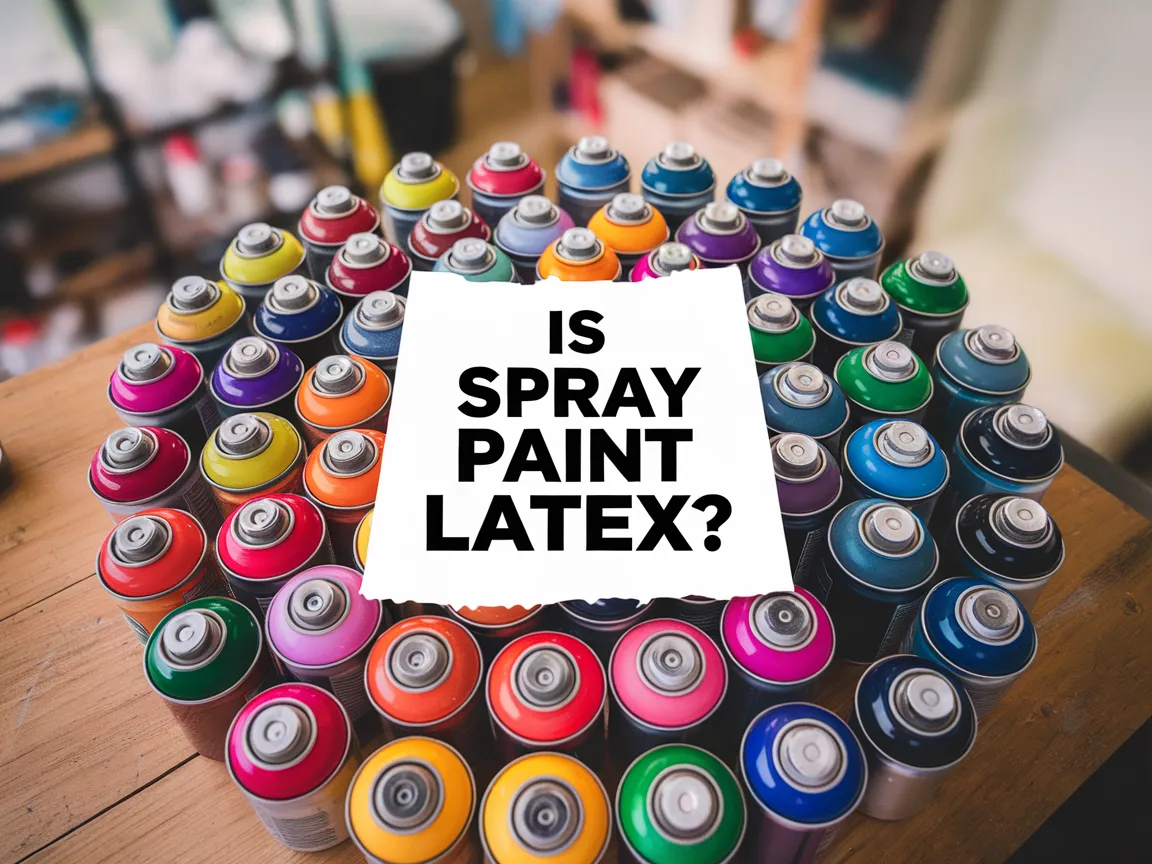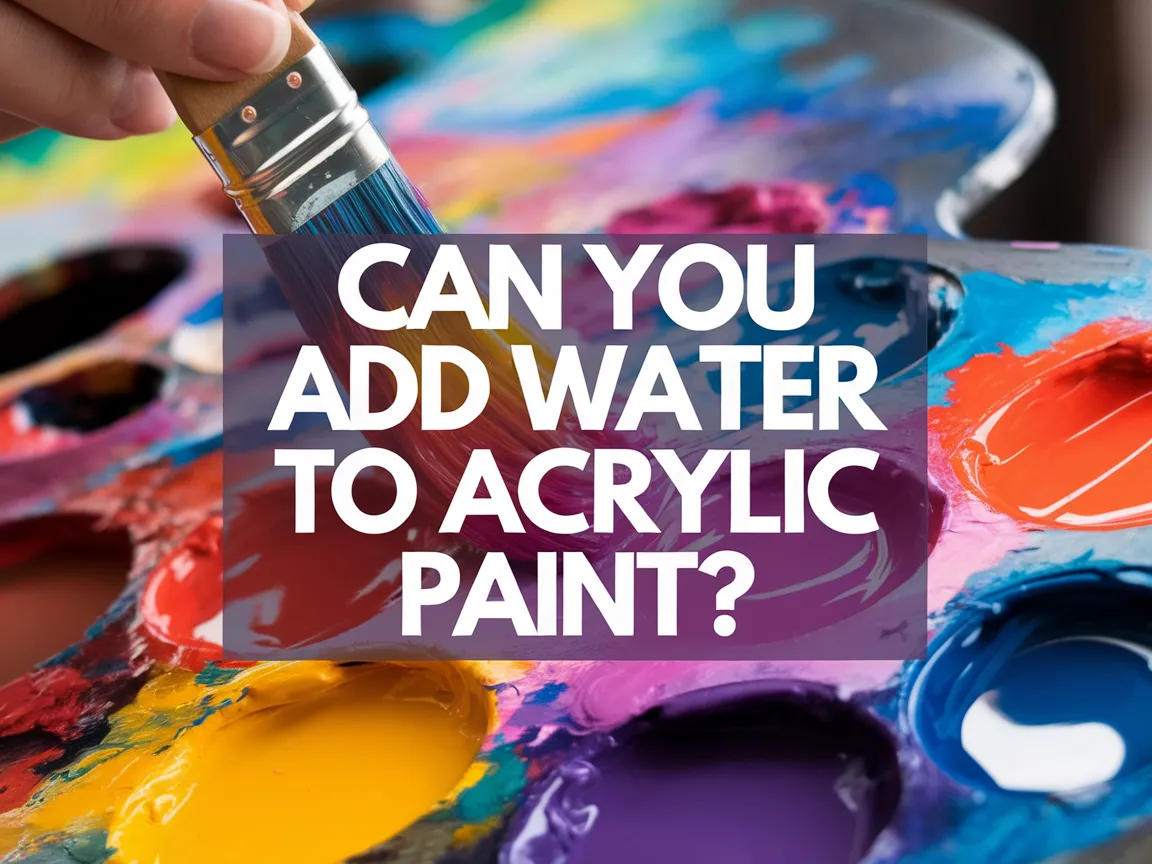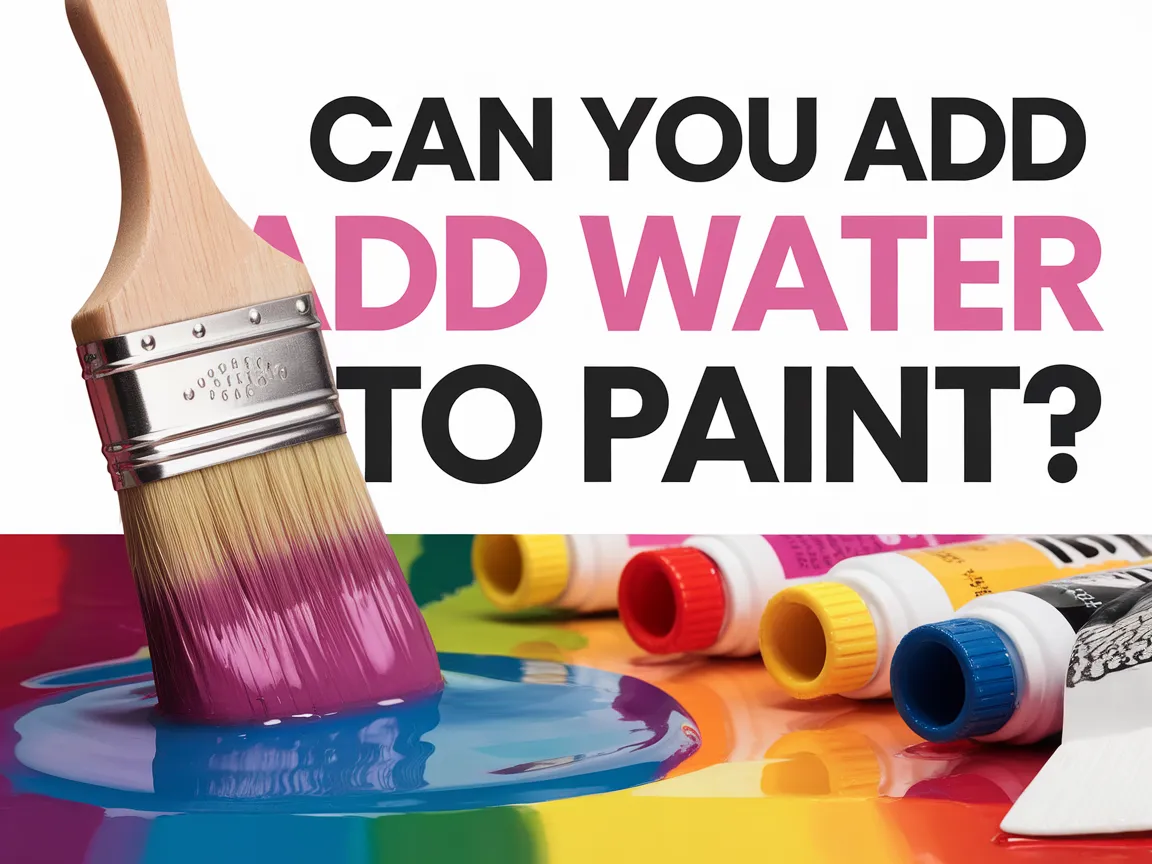Can You Put Mod Podge Over Acrylic Paint?
Published on: February 25, 2025 | Last Updated: January 7, 2025
Written By: Sarah McClintock
Mod Podge is a magical glue that makes things stick together and shine! It’s like a protective blanket for your art, keeping it safe and looking pretty.
When you ask can you put mod podge over acrylic paint, it’s important to know what you’re doing. I’ve learned that using the right products can make or break your artwork, and trust me, a little preparation goes a long way!
In this guide, we’ll explore Mod Podge and its uses, essential preparations before starting, steps for applying it successfully, color palettes, types of Mod Podge, factors affecting results, common issues, finishing touches, and creative DIY projects using Mod Podge and acrylic paint.
Contents
- 1 Can You Put Mod Podge Over Acrylic Paint?
- 2 What is Mod Podge and Its Uses?
- 3 Before You Begin: Essential Preparations
- 4 Understanding the Interaction Between Mod Podge and Acrylic Paint
- 5 Steps to Successfully Apply Mod Podge Over Acrylic Paint
- 6 Types Of Mod Podge to Use Over Acrylic Paint
- 7 Factors Affecting the Outcome Of Mod Podge Over Acrylic Paint
- 8 Common Issues When Using Mod Podge Over Acrylic Paint
- 9 Finishing Touches for Your Artwork
- 10 Different Techniques for Applying Mod Podge Over Acrylic Paint
- 11 Comparative Benefits of Each Technique
- 12 When to Avoid Using Mod Podge Over Acrylic Paint
- 13 Creative DIY Project Ideas Using Mod Podge and Acrylic Paint
- 14 FAQs About Using Mod Podge Over Acrylic Paint
- 15 Conclusion
- 16 Additional Resources
Can You Put Mod Podge Over Acrylic Paint?
Yes, you can put Mod Podge over acrylic paint! It serves as a great sealant. Just ensure the paint is fully dry before applying. This protects your artwork and adds a nice finish.
What is Mod Podge and Its Uses?
Mod Podge is a versatile, water-based sealer, glue, and finish. It’s primarily made from polyvinyl acetate, with a mixture of water and solvents that allow for quick drying—typically 2 to 3 hours.
The Finishing Touch
A freshly painted wall is a blank canvas. The best way to bring your room to life is with a single piece of statement art that ties everything together.
Browse Wall Art at Big Wall DecorSo, can you use Mod Podge over acrylic paint? I remember my first attempt at crafting a Dot Mandala rock where I wanted to seal the vibrant colors. It felt intimidating at first, but my curiosity led me to try Mod Podge. When working with paint, it’s crucial to understand potential risks and protective techniques that could impact your artistic project’s final appearance protecting your painted surfaces carefully.
You might be surprised, but I actually used it to craft decorative coasters. The glossy finish dried clear and complemented my acrylic artwork beautifully. Working on various projects, like glazing acrylic paintings, can be tricky, yet that perfect sealing layer made all the difference. If you’re curious about exploring another creative art form that offers similar satisfaction, 5D diamond painting techniques might intrigue you.
Before You Begin: Essential Preparations
What do you need to get started?
- Mod Podge Satin: You’ll need a finish like Plaid’s Mod Podge Satin. It’s essential for a glossy coat over acrylic paint.
- Soft Paintbrush: A brush, like the Silver Brush Grand Prix size 2, is necessary. A soft brush ensures smooth application without streaks.
- Sandpaper (220 Grit): Get a pack of 3M sandpaper. Lightly sanding the surface improves adhesion for the Mod Podge.
- Water Container: A small bowl or cup is handy, especially for wetting your brush for smoother application.
- Disposable Gloves: Use latex gloves like Showa 460. They protect your hands from sticky residue while working on projects.
We covered essential preparations before beginning your project. We will now cover the interaction between Mod Podge and acrylic paint.
Also See: Can You Paint Your Glasses Frames With Acrylic Paint?
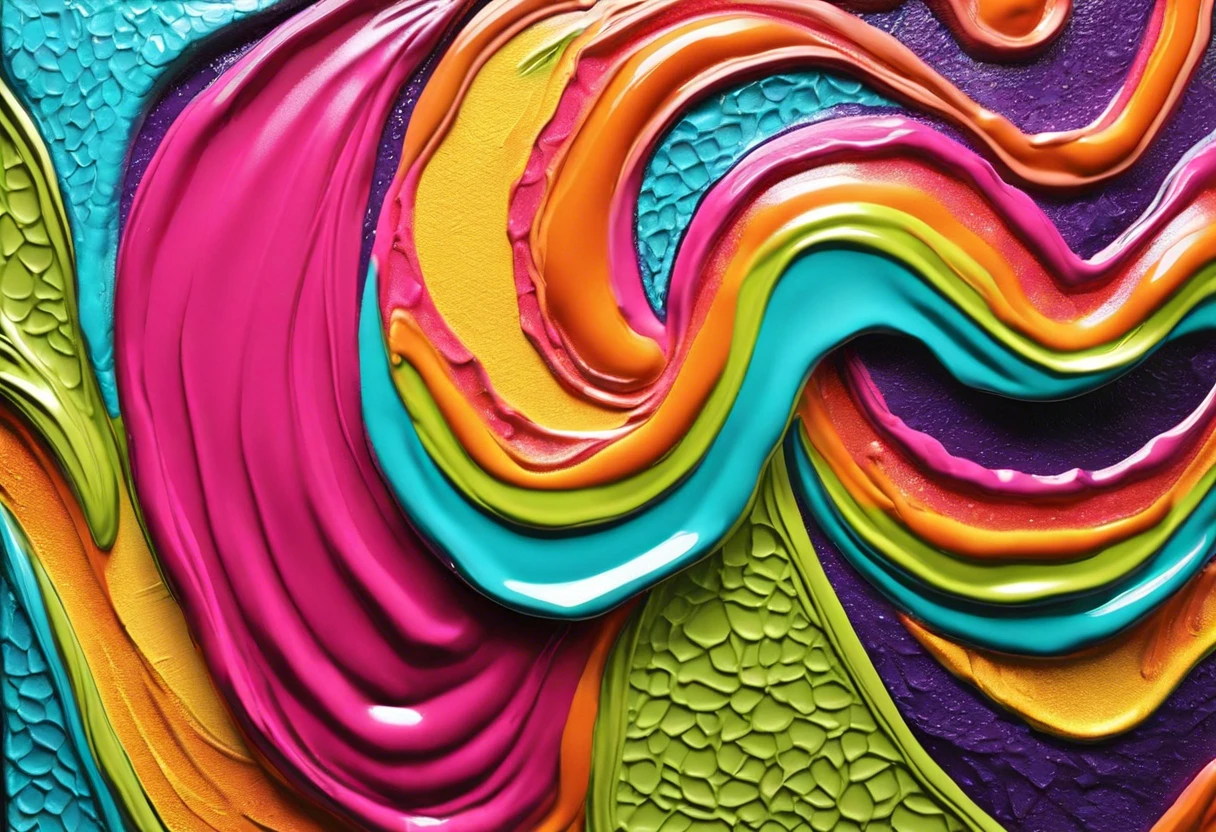
Understanding the Interaction Between Mod Podge and Acrylic Paint
Let’s dive into how Mod Podge interacts with acrylic paint for the best results.
The Finishing Touch
A freshly painted wall is a blank canvas. The best way to bring your room to life is with a single piece of statement art that ties everything together.
Browse Wall Art at Big Wall DecorThe Science Behind Acrylic Paint and Mod Podge
Both acrylic paint and Mod Podge are water-based, which benefits your projects. When Mod Podge is applied, it sits over the acrylic, forming a protective layer. This layer bonds chemically, especially when both are dry, enhancing durability. Researchers have long studied the fascinating acrylic painting techniques that inform modern adhesive methods.
Benefits of Sealing Acrylic Paint with Mod Podge
- Protection: Mod Podge shields your acrylic paint from dirt, dust, and moisture.
- Enhancement: It adds a vibrant finish, making colors more vivid.
- Cohesion: Mod Podge helps unify the surface texture, creating a harmonious look across the artwork.
How the Finish Affects Your Artwork
The finish type you choose plays a vital role. Here’s a quick comparison:
| Finish Type | Gloss | Matte | Satin |
|---|---|---|---|
| Appearance | Shiny and Reflective | Flat and Non-Reflective | Slight Sheen |
| Best For | Vibrant Colors | Subdued Projects | Versatile Uses |
| Durability | Highly Durable | Good Durability | Moderate Durability |
Testing Your Combination
Not sure which finish suits your project best? Try a small sample. Paint a section with acrylic, seal it with different types of Mod Podge, and see what you like. It’s like a mini-experiment!
We covered the interaction of Mod Podge with acrylic paint. We will now cover steps for successfully applying Mod Podge.
Steps to Successfully Apply Mod Podge Over Acrylic Paint
Here are the steps to use Mod Podge effectively over your acrylic paint.
-
Prepare the Acrylic Paint
Ensure your acrylic paint is completely dry before applying Mod Podge. Wait at least 24 hours for the paint to cure, especially with lighter colors that may take longer.
Check the paint’s texture—look for a non-sticky feel—to ensure a smooth Mod Podge application. Properly cured paint holds up better and improves the overall finish.
-
Brush on a Thin Layer
Apply a thin, even layer of Mod Podge using a soft brush. Keep the thickness to about 0.33 mm (1/16 in) to avoid bubbles or streaking.
Work in small sections to maintain an edge-to-edge seal. After covering one area, immediately move to the next to ensure a smooth finish.
-
Let It Dry Before Adding More
Allow the initial layer of Mod Podge to dry completely—typically about 15 to 20 minutes. Dragging your brush through wet Mod Podge can ruin your previous work.
I once layered too quickly, and the results were a disaster! Patience pays off here.
-
Apply Additional Layers As Needed
If your piece needs more shine or protection, add 2–3 thin layers. Each should dry for about 15 minutes before moving on.
Each successive layer adds more gloss, but sometimes less is more. I often use different types of Mod Podge, such as Gloss or Matte, depending on the desired look.
-
Final Cure Time
Once you’re satisfied with the layers, let your art cure completely for 72 hours. This step is crucial for maximum adhesion and durability.
A proper cure time saves you headaches later. Don’t rush it—you’ll notice significant differences in the finish and durability.
We covered how to apply Mod Podge over acrylic paint. We will now cover different types of Mod Podge to use.
Types Of Mod Podge to Use Over Acrylic Paint
Let’s explore the various types of Mod Podge: Gloss, Matte, Satin, and Outdoor.
-
Gloss Mod Podge
Gloss Mod Podge creates a shiny finish, ideal for adding vibrancy to your artwork. It makes your acrylic paint pop, giving it an eye-catching, lustrous glow.
-
Matte Mod Podge
Matte Mod Podge offers a flat, non-reflective finish that reduces glare. It’s perfect for a more subdued look after sealing your acrylic paint.
-
Satin Mod Podge
Satin Mod Podge strikes a balance between gloss and matte, producing a soft sheen. This versatility makes it ideal for projects needing a subtle gloss without overpowering the paint.
-
Outdoor Mod Podge
Outdoor Mod Podge is specially formulated to withstand the elements. It’s water-resistant and locks in your colors, making it essential for outdoor projects.
I’ve found that Gloss Mod Podge works wonders over acrylic paint. It enhances colors brilliantly, bringing my projects to life.
We covered the various types of Mod Podge suitable for acrylic paint. We will now explore the factors influencing Mod Podge results.
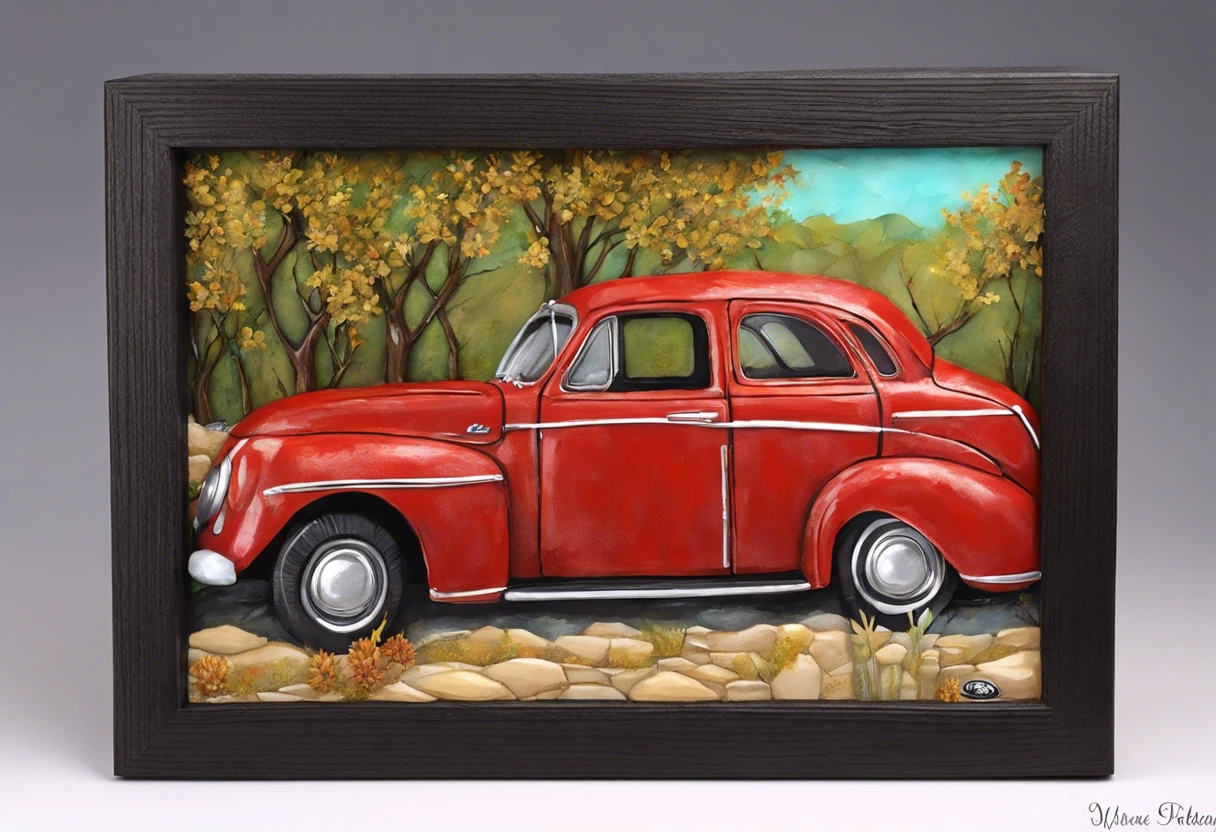
Factors Affecting the Outcome Of Mod Podge Over Acrylic Paint
What factors impact using Mod Podge over acrylic paint?
-
Type of Acrylic Paint – Some acrylic paints are glossy, which can cause adhesion issues with Mod Podge.
-
Drying Time – Allow acrylic to dry completely; otherwise, it can mix with the Mod Podge.
-
Surface Preparation – A clean surface improves bond strength; dirt or grease can ruin it.
-
Mod Podge Formulation – Different formulations (E.g., Gloss Vs. Matte) yield varying finishes over acrylic paint.
Common Issues When Using Mod Podge Over Acrylic Paint
When I tried using Mod Podge over my friend’s painting, the paint started to lift. It’s a real bummer! This happened because the paint wasn’t fully dry—wait at least 24 hours before applying Mod Podge.
To fix it, let the paint dry for another day, then apply a thin layer of Mod Podge with a soft brush. Use a clear, water-based formula to prevent yellowing over time.
The Finishing Touch
A freshly painted wall is a blank canvas. The best way to bring your room to life is with a single piece of statement art that ties everything together.
Browse Wall Art at Big Wall DecorFinishing Touches for Your Artwork
After sealing your project, wait 24 hours before exposing it to humidity. Mod Podge works best at room temperature, around 20°C (68°F), for optimal adhesion and drying.
Inspect your project for air bubbles or cloudy spots. Use a soft cloth and Gilders Paste to smooth out imperfections; it works wonders! I personally love using the Gold version for a warm glow. If you’re looking to expand your color palette, you might want to create custom blue paint techniques.
For experienced artists, apply a second layer of Mod Podge only if covering very dark colors. This prevents a dull sheen; use a foam brush and move smoothly in one direction. One millimeter (0.04 Inches) can make a difference!
Different Techniques for Applying Mod Podge Over Acrylic Paint
Let’s explore techniques that can enhance your Mod Podge application over acrylic paint.
Brushed Application Technique
This is the most common method. Use a soft paintbrush, like a size 2 or 4 round brush. Apply Mod Podge in thin layers; aim for about 0.5 mm (1/50 in) thick. Working on small sections at a time helps avoid streaks. Remember to always brush in one direction. If you’re planning to decorate a pumpkin with paint, you might want to explore acrylic painting techniques.
Sponge Application Technique
Sponge brushes can create unique textures. Dip the sponge into Mod Podge and apply gently. This method works great for rough surfaces, providing a more textured finish.
Spray Method for Large Areas
If you’re working on larger pieces, consider using spray Mod Podge. It covers evenly and reduces the chance of streaks. Hold the spray can about 20 cm (8 in) away from the surface and apply thin coats.
Comparative Benefits of Each Technique
Choosing the right technique can make all the difference in your project’s outcome. Here’s a quick comparison:
| Technique | Best For | Pros | Cons |
|---|---|---|---|
| Brushed Application | Detailed work | Flexible control | Risk of streaks |
| Sponge Application | Textured surfaces | Unique finish | Less control |
| Spray Method | Large areas | Even coverage | May overspray |
When to Avoid Using Mod Podge Over Acrylic Paint
Not every project needs Mod Podge. Here are times when you might skip it:
- When You Want a Matte Finish: If you want a flat look, using a specific matte varnish is better.
- For Extended Outdoor Use: To withstand harsh conditions, select a sealant specifically designed for outdoor use.
- On Heavy Texture: If your artwork has a lot of texture, Mod Podge might not bind well, leading to peeling.
Creative DIY Project Ideas Using Mod Podge and Acrylic Paint
How about making a stunning photo transfer onto wood? Or, try jazzing up your favorite tote bag with vibrant designs.
For both projects, just grab some Mod Podge, a piece of wood or a plain bag, and acrylic paint. Materials typically cost around $15–$25 (USD), and you’ll need about 2–3 hours for a fantastic finished product.
If you’re wondering, “can you put mod podge over acrylic paint?”—the answer is a big yes! To seal it, just apply a thin layer and let it dry; you could also use a spray sealer for an extra glossy finish. When working with different painting surfaces, it’s crucial to understand proper application techniques for painting various materials effectively.
Alternatively, if you’re looking for a more creative spin, try mixing acrylic paint with baby oil for a unique painting medium technique! I’ve found that this not only adds shine but gives depth to paintings and serves as a cool base prior to using Mod Podge.
FAQs About Using Mod Podge Over Acrylic Paint
Now let us look at some questions I typically get asked regarding Mod Podge and acrylic paint. Here are some of the most frequently inquired queries!
Can Mod Podge Be Used Over Wet Acrylic Paint?
No, you cannot use Mod Podge over wet acrylic paint. It’s essential to let acrylic paint dry completely, which usually takes about 20 to 30 minutes. If Mod Podge is applied on wet paint, it can smear the colors and ruin your project. When working with different painting techniques, you might want to explore painting alternative surfaces professionally.
Will Mod Podge Change the Appearance Of Acrylic Paint?
Yes, Mod Podge can change the appearance of acrylic paint. When you apply Mod Podge, it gives a glossy or matte finish, depending on the type of Mod Podge you choose. This alteration can enhance colors, making your artwork pop or appear more muted. If you’re exploring creative painting techniques, you might want to explore painting different surfaces.
How Long Does It Take for Mod Podge to Dry?
Mod Podge typically takes about 15 to 20 minutes to dry to the touch. However, for full curing, wait 24 hours. Proper drying ensures a solid seal and prevents damage to your painting later on.
Can I Use Other Sealants Instead Of Mod Podge?
Yes, you can use other sealants instead of Mod Podge. For instance, spray acrylic sealers or varnishes work well too. Choose your sealant based on the finish you want—glossy, satin, or matte.
How Do I Remove Mod Podge if I Make a Mistake?
You can remove Mod Podge with warm, soapy water or a damp cloth while it’s still wet. If it’s dried, gently scrape it off with a plastic scraper or soak the area. Always test a small section first!
How Do I Make Acrylic Paint Shiny?
You can make acrylic paint shiny by applying a glossy finish like Mod Podge or acrylic varnish. These products enhance shine and protect your artwork from dust and fading.
Can Mod Podge Be Used on Other Surfaces Besides Canvas?
Yes, Mod Podge works on various surfaces beyond canvas, including wood, fabric, and glass. It bonds well, creating a durable, decorative finish regardless of the underlying material.
Also See: Can You Mix Acrylic Paint With Latex? Find Out Here!
Conclusion
I hope this was worth your while. We covered what Mod Podge is, its uses, essential preparations before application, steps for a successful application, recommended color palettes, types of Mod Podge, factors affecting outcomes, common issues, finishing touches, and creative DIY project ideas.
Hopefully, I was able to impart some of my experience. So, can you put Mod Podge over acrylic paint? Yes, you can, and it works nicely when following steps for proper application and selecting the right type. Just remember, allowing it to cure properly is key to achieving a great finish.
For additional insights and guidance, visit Paint Answers.
Additional Resources
- Smith, R. (2003). The Artist’s Handbook of Materials and Techniques (5th ed.). New York, NY: Knopf.
- How to apply Mod Podge to your Acrylic Paintings!!
- r/TerrainBuilding on Reddit: How long to wait before putting mod podge over acrylic?
- How Should I Seal An Acrylic Painting (Archival)? | Original Canvas Wall Art For Sale – Prints






